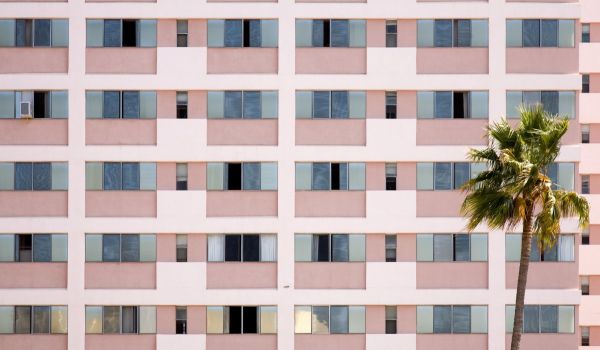San Diego’s population is growing fast — nearly 16,000 people moved to the California city between July 2015 and June 2016, a roughly 1.5 percent increase — and the supply of housing hasn’t kept up with demand.
As with many U.S. cities, this has created an affordability problem. Since 2002, rents have increased 32 percent while the median income of local renters has decreased by 2 percent. There are nearly 9,000 homeless people living in San Diego County. According to a recent San Diego Housing Commission report, the city needs to almost triple the amount of housing it builds each year to meet demand.
For one solution, San Diego turned to the market, using inclusionary zoning to try to spur affordable housing development. This zoning tool, which is being deployed in various forms in cities throughout the U.S., typically allows developers to put up bigger buildings, with more units, in exchange for contributing in some way to a city’s supply of homes that rent below the market rate and are therefore affordable to a greater percentage of residents. For many years, San Diego relied on a statewide program and a long-unenforced city ordinance, but in 2016, the city rolled out a new program that builds on the state law by offering more incentives for developers and, according to one new report, the effort is showing promise.
California’s longstanding inclusionary zoning law allows residential developers to receive incentives, including approvals to build taller or with a bigger footprint, or to provide fewer parking spaces than typically required, if they provide a certain number of rent-restricted units. The ability to build higher or wider than zoning would otherwise allow is the centerpiece of the program. The bonus varies and depends on how many such units a developer provides and for what income level they are affordable. The maximum bonus is a 35 percent increase in density if 11 percent of units are rent-restricted.
The program had marginal success in San Diego. The San Diego Union-Tribune reports that in the past 10 years, 16 projects have taken advantage of the bonus program and built 292 rent-restricted units. Another 12 projects in the pipeline will yield 181 such units.
San Diego created a mandatory inclusionary program in 2003 that requires multifamily building developers to set aside 10 percent of units as rent restricted or pay a fee to build affordable housing elsewhere. Since its creation, it has produced over 600 onsite units and close to 2,000 offsite units. But, according to the Union-Tribune, the law has not been enforced since at least 2009 because of its uncertain legality in the state. In 2015, the state supreme court ruled that inclusionary zoning was, in fact, legal.
With statewide incentives not producing robust enough results, the city launched the Affordable Homes Bonus Program (AHBP) in June 2016. It’s an expanded version of the state program that, among other incentives, offers a maximum of 50 percent density increases in exchange for 15 percent rent-restricted units built. AHBP allows developers to get up to five bonus incentives, where the old program capped out at three. According to a new report from Circulate San Diego, a transportation and sustainable growth advocacy group, AHBP is already proving more successful than the state program in the city.
AHBP hasn’t been around long enough to produce any housing, so the comparison isn’t apples to apples. But, Circulate looked at several data points including number of applicants, number of affordable units they might produce and the average density bonus applicants will get if approved.
To date, 18 market-rate developers have applied for the new program. Between 2005 and 2016, a total of 36 developers applied to the state density bonus program. Circulate points out that broken down as applications per month, that’s a 900 percent increase. The AHBP applicant pool will get an average density increase of 35 percent, compared with 28 percent under the state program. The existing applicants will produce 96 rent-restricted units, a far faster production rate when compared to 292 rent-restricted units built in a decade.
“With the old programs, the incentives weren’t robust enough. … AHBP modestly built on existing law in California to allow greater land use density when people provided more affordable housing,” says Colin Parent, Circulate’s interim executive director. Parent helped craft the AHBP in his previous role as the San Diego Housing Commission’s policy director.
The increased density bonus for developers has drawn criticism. Nico Calavita is a San Diego State University professor emeritus whose research focused on affordable housing policy and especially inclusionary housing policies.
“It’s a question of balance and it’s a question of trade-offs,” says Calavita. “It is wonderful for developers. It is wonderful for affordable housing. It is wonderful for the people who want to make the city higher density and more transit conducive. They are laudable goals, but at what cost?”
Calavita sees drawbacks for neighborhood planning and quality of life. Because AHBP increases the state law’s bonus and allows for building heights and footprints not otherwise permitted by San Diego’s community plans, Calavita thinks residents are getting a raw deal.
“It’s not true that it’s a modest increase. Fifty percent is not modest. … It does away with community plans that decided on a particular density that everyone can live with,” he says.
Robert Hickey, a Washington, D.C.-based housing policy consultant, seconds Calavita. “Ideally this kind of policy is integrated into the city’s neighborhood or general plan,” he says, “so that the bonus units are already anticipated in the building envelope that a community has ratified.”
But he concedes, “Not all cities have the luxury of time to wait seven years for the general plan to be updated. In those cases they have to walk the right line of community input.”
Parent says that rolling out AHBP, rather than going through community plan updates, was the only way to get the levels of density and affordable housing increase the city desperately needs.
“One of the challenges we’ve had in the San Diego region is that any time anyone talks about urbanism or more transit-oriented development they talk about updating our community plans. But it’s really challenging to add capacity in those documents,” he says. “Those incumbent NIMBY groups are often strong voices for the status quo.”
San Diego has 52 communities. In 2016, the city approved four community plan updates. According to Voice of San Diego, the four plans together allowed for a 4 percent density increase.
Inclusionary housing won’t fix San Diego’s affordability crisis alone, but Parent thinks it’s part of the solution.
“I think the scale of the program is still relatively small compared to the scope of the housing needs in the region. But it is going to chip away at the lack of affordable housing,” he says.
A bolder program may be on the horizon. Earlier this week, Council Member Chris Ward wrote a memo asking the mayor and council to explore the possibility of updating the mandatory inclusionary housing policy.
Editor’s Note: This article has been updated to include information about San Diego’s mandatory inclusionary program of 2003, and to correctly quote Nico Calavita about AHBP’s increase of the state law’s bonus.

Josh Cohen is Crosscut’s city reporter covering Seattle government, politics and the issues that shape life in the city.
Follow Josh .(JavaScript must be enabled to view this email address)



_600_350_80_s_c1.jpg)












